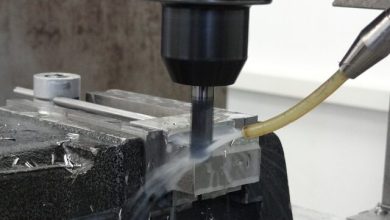Why Fire Extinguishers Need To Be Refilled Every Year

Despite being protection tools, a fire extinguisher can only work as is the maintenance it gets. It is imperative that they be refilled annually so that they stay in good working order throughout the year. Understanding when and why such maintenance is required can be the difference between life and death, not to mention compliance with the safety standards.
For the individuals who are one of the many CO2 refill near me and have no idea why this must be crucial, this blog is here to solve your confusion.
The Importance of Fire Extinguishers
Fire extinguishers are the basic means of initial combat with fire. They can assist you and enable you to control small fires before such a fire becomes a major disaster. Still, to be efficient in their operations, they must be in excellent condition and, therefore, have to be charged.
Why Refill Fire Extinguishers Annually?
-
Pressure Maintenance
The pressure inside a fire extinguisher is one of the principal factors. If the pressure is low, the extinguisher’s chemical agent is not discharged correctly. These great refills demand that the extinguisher has the right pressure, guaranteeing you it will work as required.
-
Chemical Agent Freshness
The chemical agents inside fire extinguishers can degrade over time. With a CO2 refill annually, you can ensure that the agent remains fresh and effective at extinguishing fires. This is especially important for extinguishers using water or foam, which can evaporate or become less effective over time.
-
Compliance with Safety Regulations
In as much as most fire safety laws mandate fire extinguishers to undergo checks and then be refilled in a year. This is to make sure that all safety equipment shall be in perfect condition and readily available should there be any mishap. These magazines may attract fines or heightened legal responsibility in the case of a fire or non-compliance.
-
Risks of Neglecting Annual Refills
Failing to CO2 refill your fire extinguisher once a year has several dangers, as explained below. Spare no words. It is crucial to note that in case of an emergency, an extinguisher that does not perform optimally increases the possibility of the fire raging through the whole building. Further, when they are old or have deteriorated, they can become hazardous to health or destructive to property.
The Process of Refilling a Fire Extinguisher
Refilling a fire extinguisher is not just about adding more chemical agents to the fire extinguisher. The process includes:
1. Inspection: Ensuring the Integrity of the Extinguisher
Thoroughly inspect the extinguisher. To be certain that the extinguisher is safe to use, perform the following checks: There will be any signs of physical damage, such as dents, cracks, and corrosion on the structural members. Take extra precautions with the parts that may have been in contact with strong sunlight, water, or, most especially, chemicals. Also, check for signs of leakage or the pressure drop in pipes containing the liquid.
2. Discharge Test: Verifying the Functionality
Demonstrate the usability of the extinguisher by conducting a discharge test to make sure the extinguisher is in a condition to be refilled. It is advisable to partially discharge the extinguisher to guarantee the right release of the chemical agent and pressure.
3. Refill: Adding the Correct Amount of Chemical Agent
Recharge the extinguisher with an appropriate CO2 tank refill near me agent. After an inspection and discharge test, an extinguisher may be refilled if the test results are favorable. The technician will accordingly put the right type and right amount of the chemical agent as prescribed by the extinguisher. Make sure that the used agent does not lean the extinguisher to a specific type of fire; also, make sure that the used agent is compatible with the extinguisher’s design.
4. Repressurization: Ensuring Optimal Pressure Levels
Check whether there is damage to any of the extinguishers by checking for signs of corrosion, crack, or any trace of leakage on the body of the fi(re) extinguisher. Test its operation by releasing a little of the extinguisher not fully. Finally, refill the extinguisher with the appropriate extinguishing chemical agent and the right quantity, depending on the manufacturer’s recommended standard.
5. Final Inspection and Tagging: Certifying the Refill
Perform the last physical inspection and provide the certification. There is a crucial final inspection after refilling all the items present in the car. The checkpoints to observe include the pressure of the extinguisher, the condition of the seal, and the general condition of the extinguisher. When it undergoes this last check, put a tag showing that it has been through inspection, refilling, and certification to safety standards.
Conclusion
Checking CO2 refill on fire extinguishers annually is not recommended–they are compulsory. It is guaranteed that with the annual refill, your extinguisher will work on any type of fire problem and will, therefore, protect yourself, your property, and people around from fire hazards when needed. Do not keep your fire extinguisher inactive and ‘cold’; be ready to put it to work if needed.





